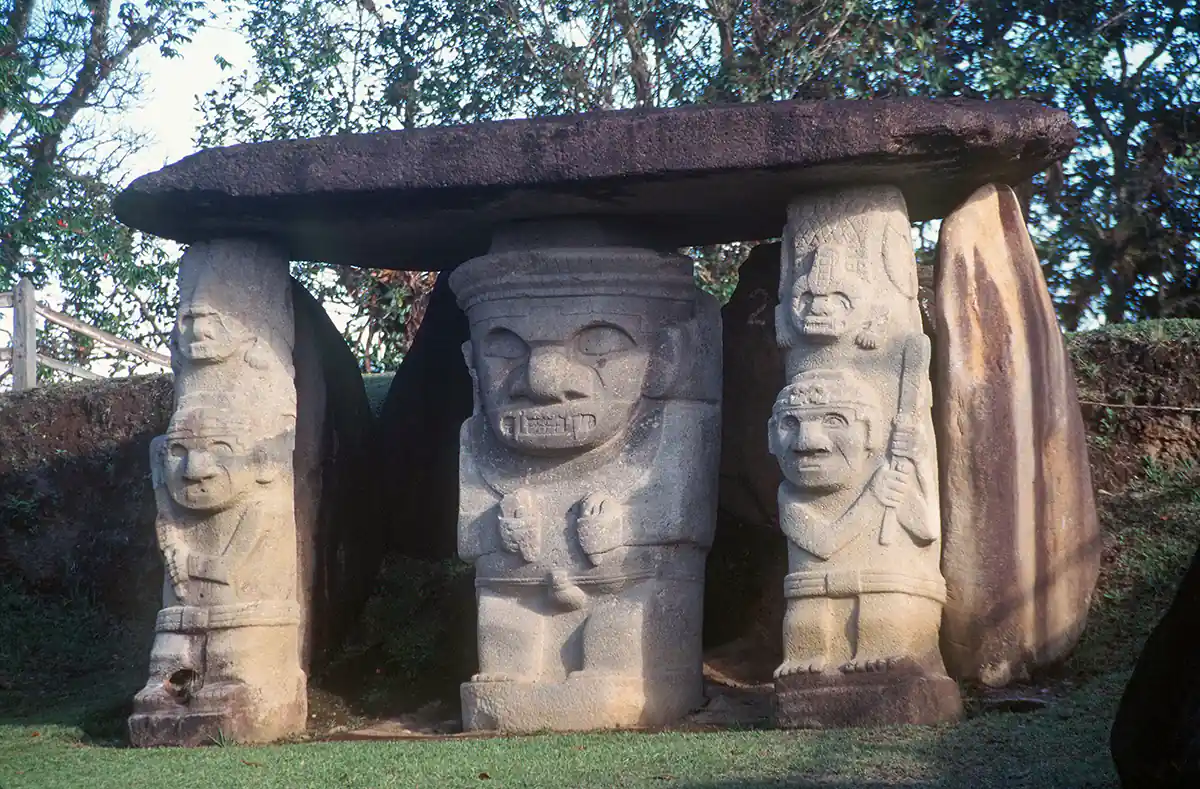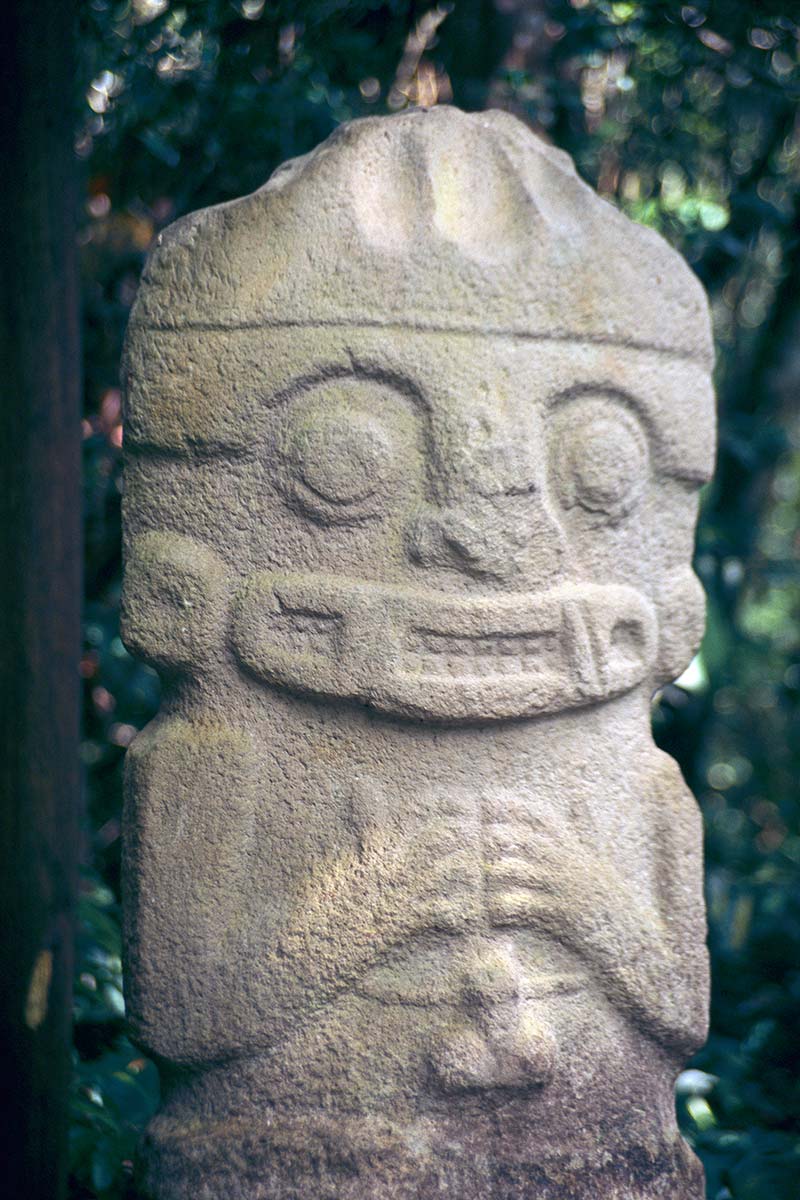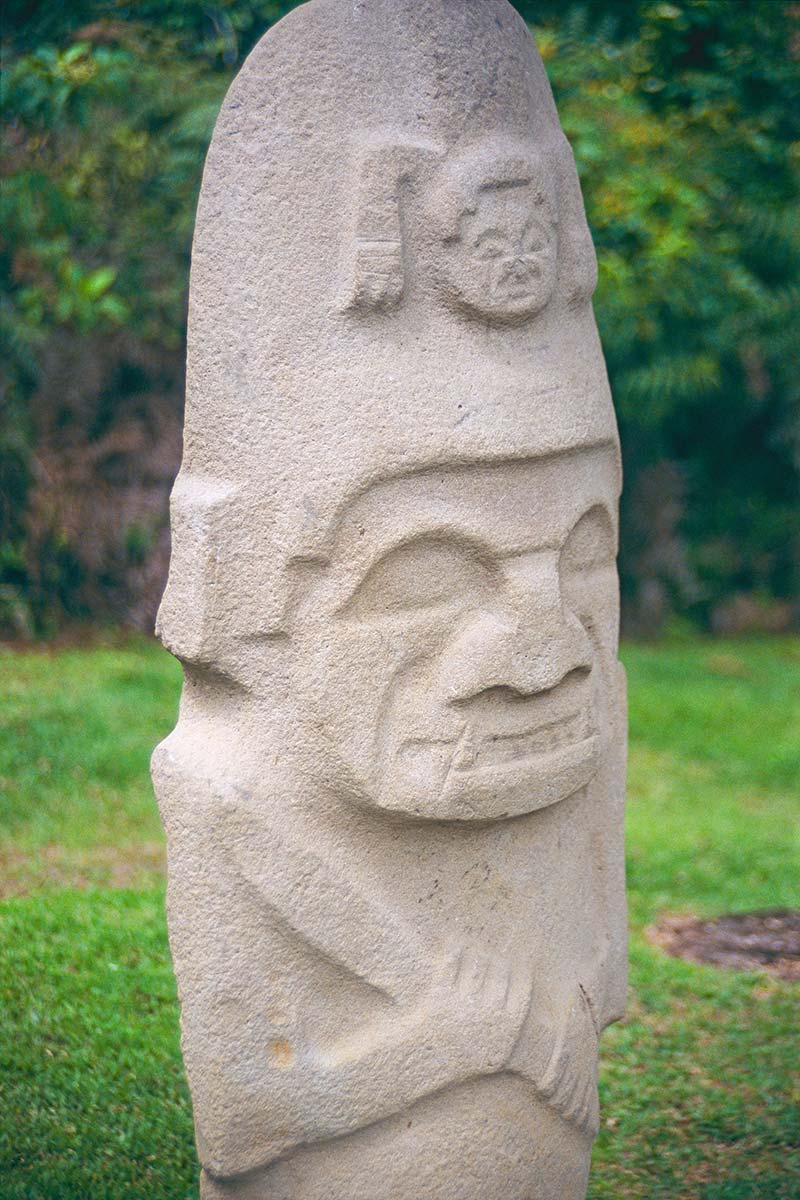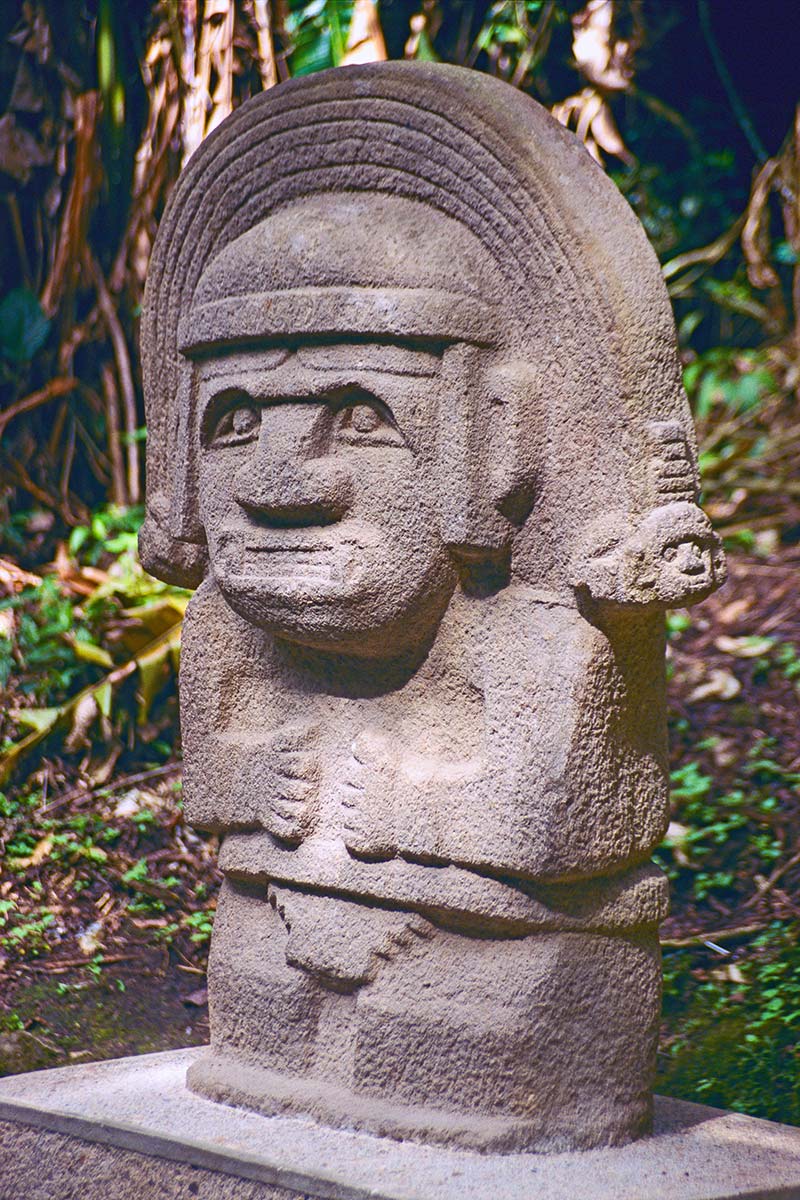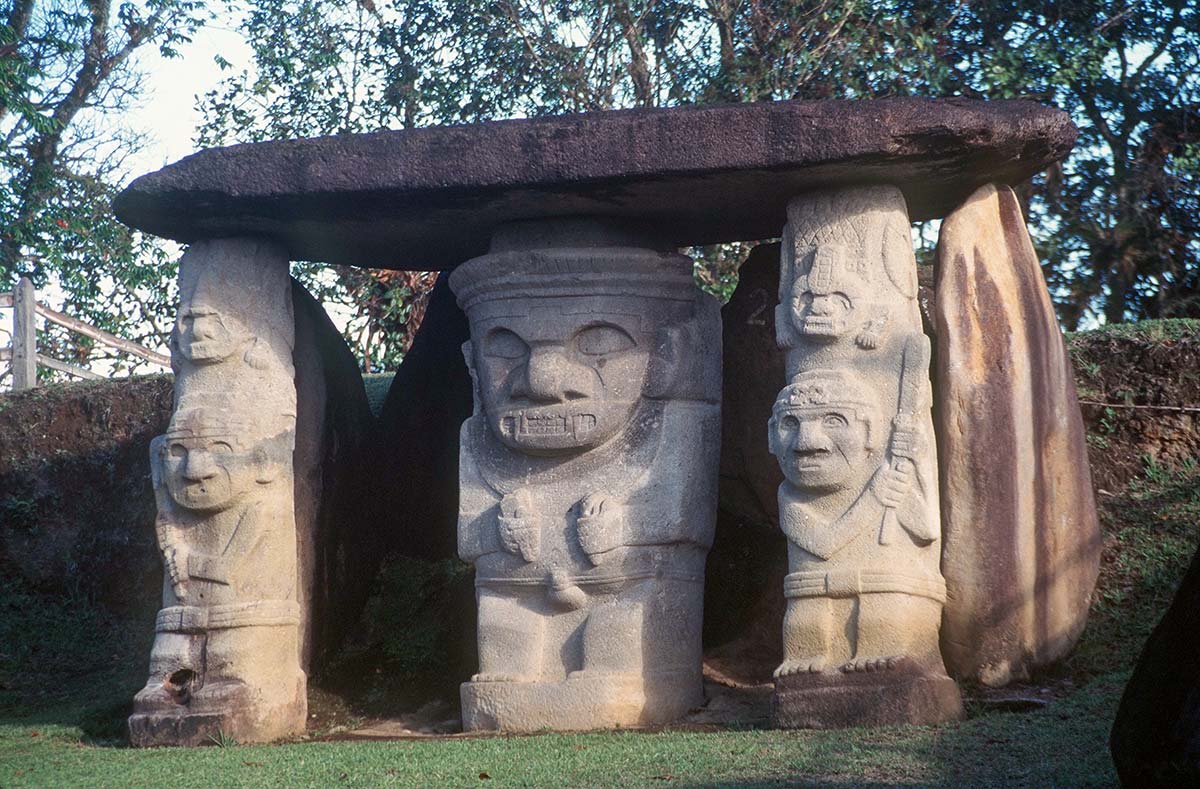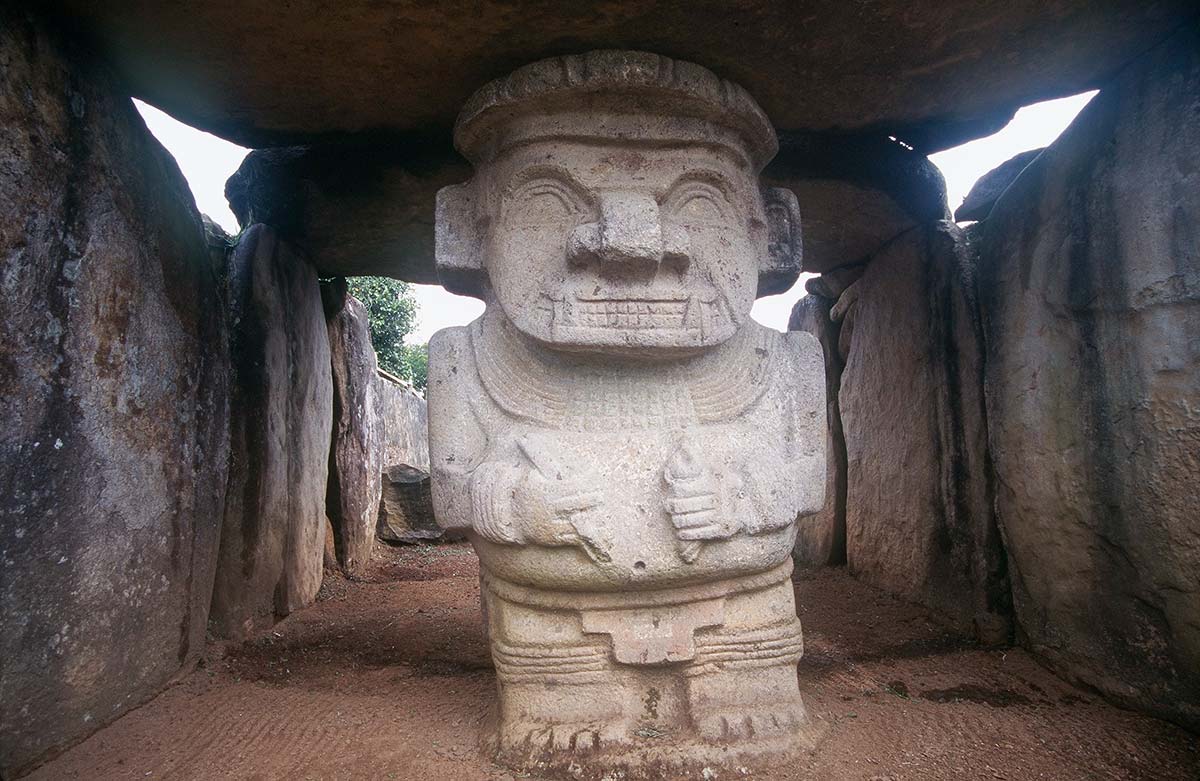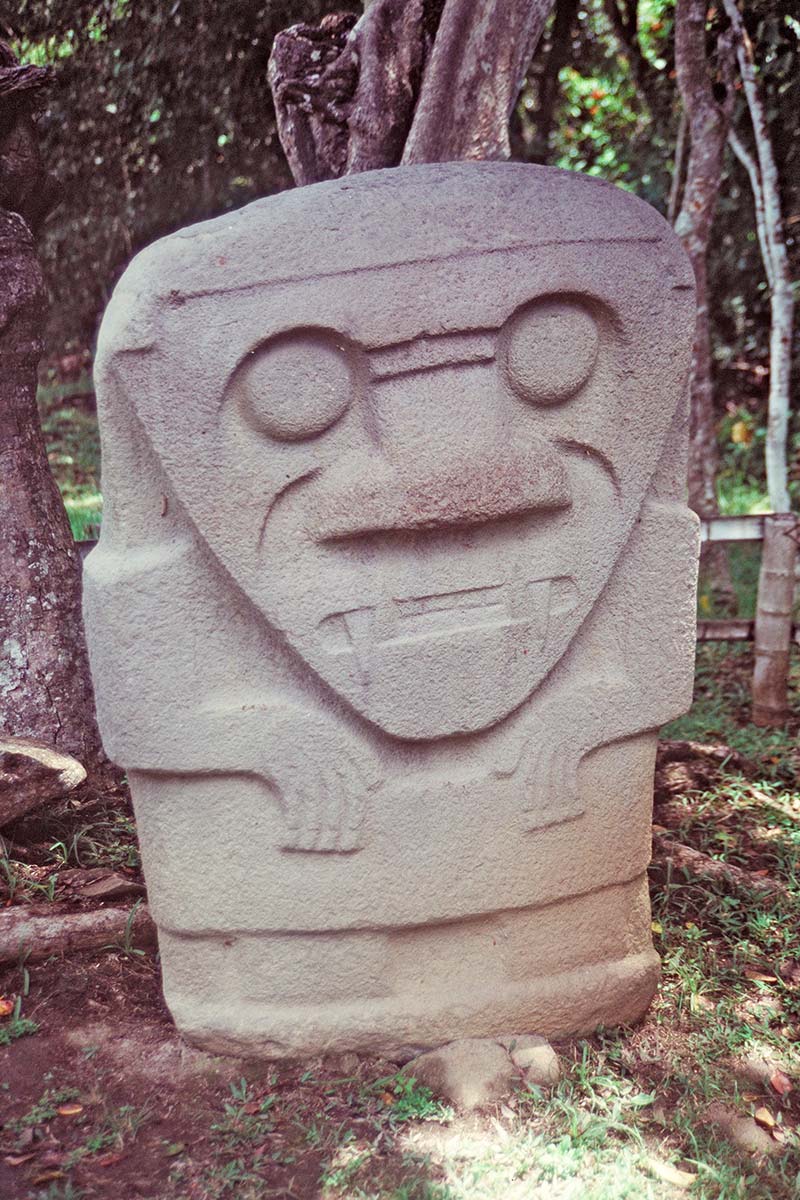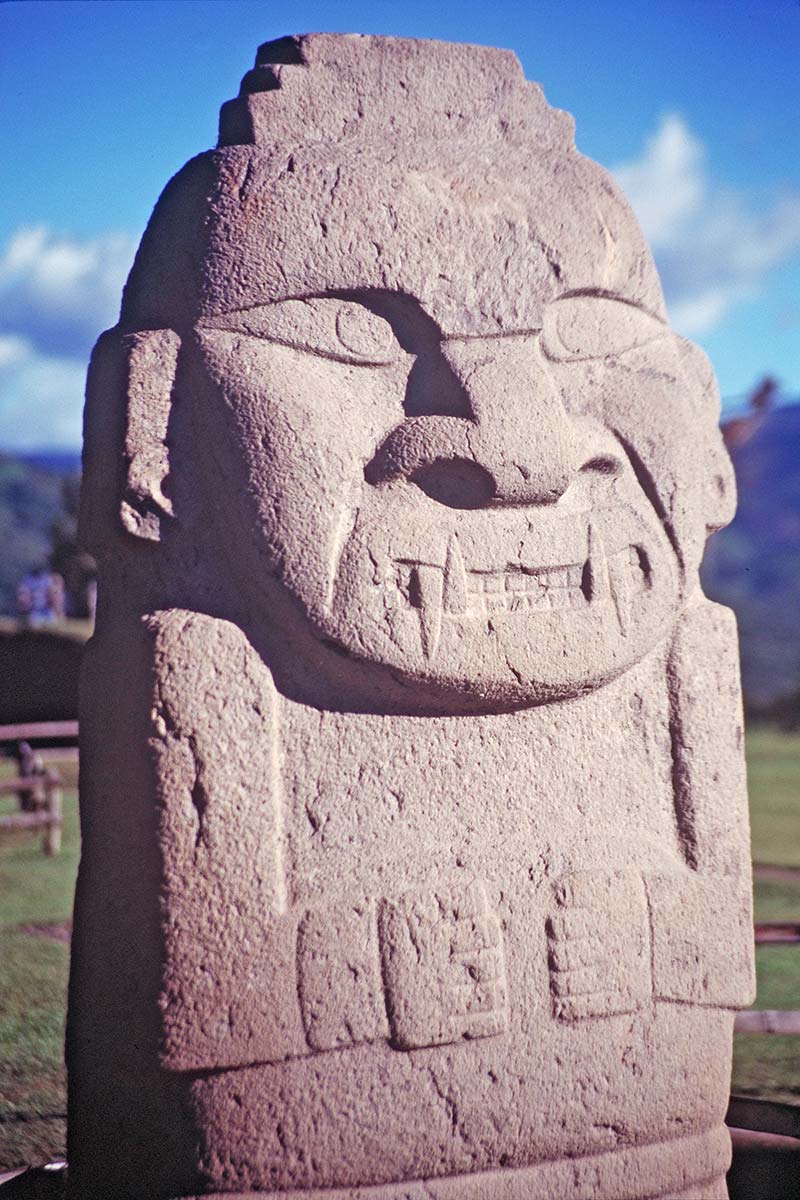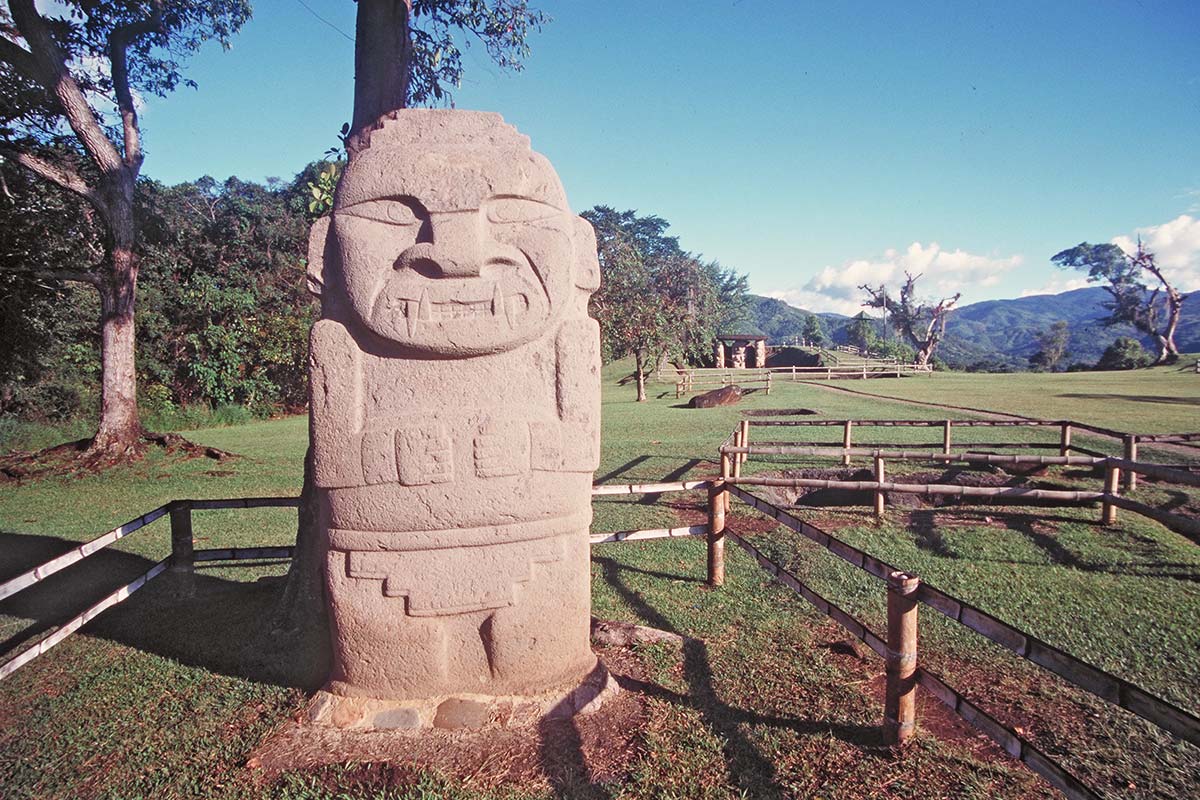San Augustin, Colombia
In addition to its Christian pilgrimage shrines, Colombia has an important pre-Colombian ceremonial center called San Augustin. Considered by archaeologists to be one of the most significant ancient places in Latin America, San Augustin is a collection of ceremonial and burial sites scattered over an area of 250 square miles. Little is known of San Augustin. In particular, who were the people that lived here, where did they come from, when did they arrive, and what was the purpose of the extraordinary stone figures they so expertly carved? None of these questions can be answered with any degree of certainty. Scholars have hypothesized that archaic people settled in the rolling hills bordering the Magdalena River as early as 3300 BC. These shadowy people may have been the ancestors of the stone carvers who produced more than 500 monolithic statues, sarcophagi, and petroglyphs sometime between the 6th and 14th centuries.
Regarding the purpose of the fantastic stone statues, neither archaeology nor local folklore provides any clues. Ranging in height from twenty centimeters to seven meters, the statues depict an incredible variety of anthropomorphic and zoomorphic figures. There are reasonably realistic representations of human figures, smiling, frowning, sneering monsters, and various animals such as jaguars, snakes, frogs, and birds. Some of the faces of the statues are somber, others are serene and wise, and still others are frightening and ominous. Certain scholars interpret the sculptures as metaphors indicating shamanic associations.
The statues seem to me to be more than simple sculptural constructions, and the stones have a power beyond their visual appearance. They seem to be hiding something within themselves. During the three days I spent gazing at, touching, and photographing the statues, I frequently felt as if I were in the presence of living beings with particular personalities. This was a familiar experience for me. Many times before, in my travels worldwide, I have come upon carved figures, talismans, and ceremonial objects that have radiated a similar power. Researching the history of these objects, I have often found evidence that many had been purposely charged with spiritual and shamanic power through the agency of ritual and magic. These artifacts functioned as batteries or memory banks, recording the particular powers directed into them. While nothing is known about the preparation or use of the San Augustin statues, it seems that they are objects charged with - and still containing - mystic powers from a long-forgotten age.
Click any image to enlarge.

Martin Gray is a cultural anthropologist, writer and photographer specializing in the study of pilgrimage traditions and sacred sites around the world. During a 40 year period he has visited more than 2000 pilgrimage places in 160 countries. The World Pilgrimage Guide at sacredsites.com is the most comprehensive source of information on this subject.
